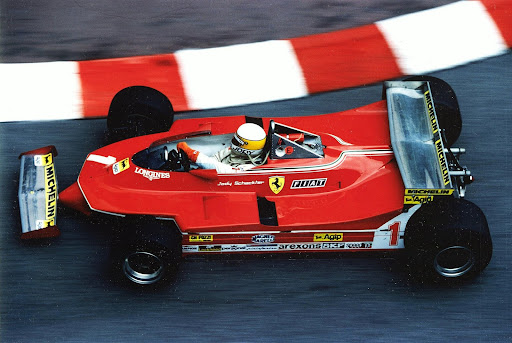The chief problem with the Tyrrell P34 was not reliability, it was tyre availability. They could not get Goodyear to invest serious money in developing tyres for 10" wheels, probably because only two cars on the grid ever were likely to run them. They finished 1-2 at Sweden in 1976, so the design seemed to work pretty well.
Derek Gardner, designer of the P34,
shuffled off his mortal coil in January of 2011.
Front brake arrangement on the P34:

The P34 was in fact the inspiration for the Williams FW08-6, as well as for the Ferrari 312T6:
Lauda and Regazzoni reportedly got along with the 312T6 well enough but Reutemann wadded it at Fiorano at about the time of Lauda's Nürburgring crash, and it never got rebuilt. A comparison of 312T6 versus 'regular' rear tyre sizes:

Ferrari 'leaked' the photo of an 8-wheeled version, the 312T8, which was a hoax, but nothing I can find makes it clear whether it was a non-functioning mock-up or a faked photo:
Colin Chapman also dabbled with the concept but he never got much further than this prototype:

Not exactly "Simplificate, then add lightness," is it?
The 312T6, ironically, led indirectly to the development of the first directional rain tyre with symmetrical diagonal sipes, the iconic Goodyear Gatorback. Wet testing proved the dual rear wheels were highly resistant to aquaplaning, presumably because of the gap between the dual tyres. But the extra pair of wheels made the pit stops a bit fiddly, so Goodyear engineered a single tyre on a single wheel with essentially the same tread configuration, featuring a deep and wide central channel. Tread in rain tyres then still was cut by hand, and someone added diagonal sipes on a lark, which made them even grippier in the wet.
A set of vintage F1-spec Gatorbacks:
Intermediate wet Bridgestones:
So in a "butterfly effect" sort of way, the Tyrrell P34 was the impetus for the modern rain tyre.
EDIT:
The Williams FW08-6 in the photos above, BTW, was being driven by Alan Jones.


















